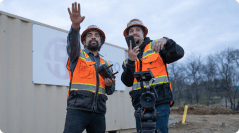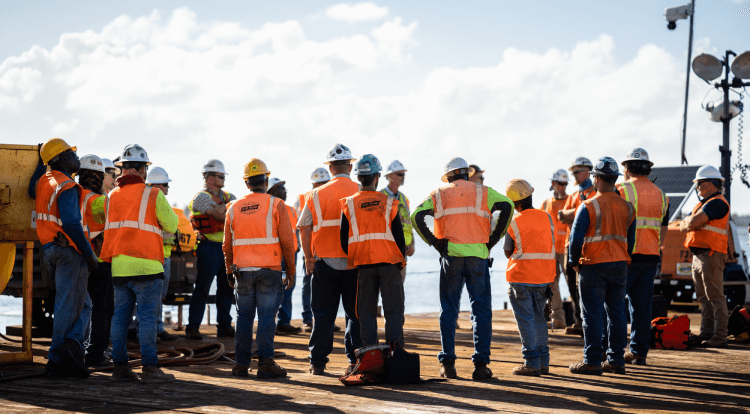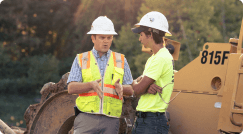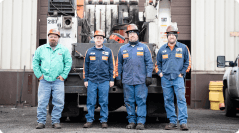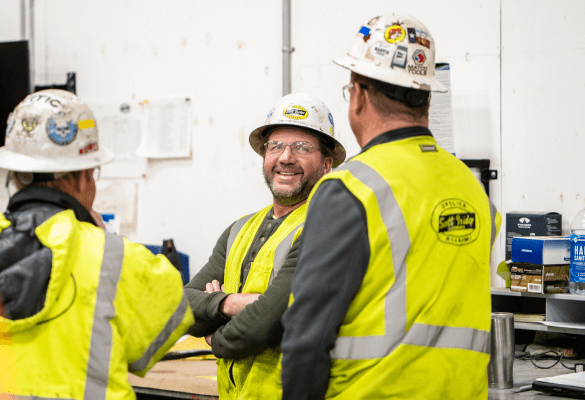Getting Started: Geotechnical Engineering
Written by Mike Smith
January 26, 2023
Everyone in the Dirt World depends on geotechnical engineering to get their jobs done. But not everyone knows what that is or how it works.
Long-time geotechnical engineer Mike Smith will teach you the basics and why geotech is a big deal.
What is geotechnical engineering?
Geotechnical engineering is a type of civil engineering. Geotechnical engineers study the soil on a jobsite and help project designers and contractors know if the soil can actually support the load of the structure they want to build.
Why is geotechnical engineering important?
According to Mike, underground construction is the number one source of construction lawsuits because you don't know what's underground until you start excavating.
Geotechnical engineers help project owners and contractors get an idea of what's there before they start digging. That way, they can avoid potential issues when they're excavating, grading, or working totally underground.
The general contractor and earthwork contractor also need to understand the soil requirements going into construction because every site is different. A single-family home may not need much earthwork, but other sites with heavy loads or problematic soils could need extensive work before a building can go up.
It's like Mike says: "Some people think the construction project consists of the concrete, steel, masonry, the things you can see above the ground. But the preparation of the earth beneath the project is just as important to the performance of that structure as any of the materials."
When does geotechnical engineering happen?
The quality assurance side of geotechnical engineering happens during a project's design phase, anywhere from one month to five years pre-construction. Some project owners may not even have funding for construction when they call on a geotechnical engineer.
That's because geotechnical engineering can affect how—or if—the project gets built. This way, designers can make changes before starting construction.
After construction, some contractors or project owners bring the geotechnical firm back to do quality control testing. Then, they can rest assured that any changes or problems that came up during construction have been addressed.
How does geotechnical engineering work?
Project designers call companies like Mike's civil engineering consultancy, SAECO, to do geotechnical engineering for them. There are three key steps to this process: drilling, observing, and lab testing.
Drilling
When SAECO goes to the project site, the geotechnical engineer bores anywhere from five feet to over 100 feet into the soil, depending on how heavy the load will be on the site.
Site limitations can also affect how deep the engineer can drill. Mike explained, "Sometimes, they want to do a 20-30 foot bore, but they can only do five or 10 feet because of hard rocks under the soil."
The geotechnical engineer tries to do as many borings as they can, which also helps them figure out what's between the bores. For example, they may do five borings on a five-acre site. That site is pretty big, and they're evaluating less than 1% of it. But by strategically placing those bores, they should be able to identify what will happen between the bores. Then, they can make recommendations on how to construct the building, bridge, road, or other structure to last a lifetime.
Observing
While they're drilling, the engineer observes the soil. They can tell whether it's wet or dry, loose or compact, sandy or made of clay. These surface observations help them get an idea of the soil's characteristics. But to be sure, they have to take soil samples back to the lab.
Lab testing
SAECO has labs in Tucson and Phoenix. When they test the soils, they're basically trying to answer one question: "What will happen if a given load is exerted on those soils?" They simulate those loading conditions and evaluate how the soil responds.
Once they finish testing, the team creates a document called a geotechnical report. That's where they tell the project designer what to expect during construction and make recommendations for how to prepare the soil to support the load that will go there.
What do geotechnical engineers look for in the soil?
Geotechnical engineers look for a lot of things in the soil. In this lesson, Mike talked about looking for usability, moisture content, density, and problem soils.
Usability
Some soils are such poor quality, you can't build on them. In that case, the contractor will have to excavate the existing material and haul it off—or else use it in places where poor quality doesn't matter, like landscaping or mounding. Then, they have to import soil from another site to build on.
More often, the contractor can use the soils onsite as engineered fill. This material will be under the structure, helping support the load. The geotechnical engineer recommends ways the contractor should prepare the engineered fill to make sure it can do its job.
Moisture content
All soil has in situ moisture. That's the amount of moisture that's naturally in the dirt.
To build on it, the soil needs to be at its optimum moisture content. Every soil has its own optimum moisture content, and this can be different from its in situ moisture. In Arizona, where Mike works, the optimum moisture content is usually anywhere from 6-20%. However, some soil in the area has as little as 2-3% in situ moisture.
If those dry soils are going to become engineered fill under a structure, the contractor will need to add water to reach the optimum moisture content. They'll often over-excavate and remove the soil, then moisture condition it.
Moisture conditioning helps get the right amount of water into the soil so it will compact properly and hold the structure up. That could mean adding water to the soil like SAECO does in Arizona. In other areas, moisture conditioning might mean drying the soil because it's too wet.
Moisture conditioning can take a lot of time, money, and water. The project designer and the contractor need to know when they're planning the building and estimating costs.
Density
Every soil also has a maximum dry density, which tells you how compact it is. The maximum dry density varies based on where you are in the country or even the county. Some soils need a maximum dry density of 95-100 pounds per cubic foot or less. Others need 120-125 pounds per cubic foot or more.
The geotechnical engineer will tell the contractor what the soil's maximum dry density should be. Then, it's up to the contractor to achieve it.
To get the right density, equipment, and water trucks drive over the soil. They place the soil in lifts that are 6-8 inches thick. Sometimes, the geotechnical engineer will recommend an even thinner lift. The thinner the lift, the easier it is to achieve the right density.
Problem soils
There are different types of problem soils in different parts of the country. For Mike and his team at SAECO, they're concerned about how much clay is onsite.
Clay soils create problems for projects because their volume changes. Sometimes when you add moisture to clay soils, they swell or collapse.
"The engineers have to identify the clay during the geotechnical phase so they can tell the designer how to deal with those soils during construction. If there's too much clay, they'll have to remove the soil and replace it with a more suitable soil from a borrowed source," Mike explained.
What makes a good geotechnical engineer?
Being a good geotechnical engineer comes with time and education. Most people start with a bachelor's degree in civil engineering. Then, they narrow their focus and start getting geotechnical experience.
A good geotechnical engineer helps identify ways to prepare the soil that result in a safe structure. Depending on the earthwork costs, their recommendations can sometimes determine if the project moves forward or not. If it does move forward, geotechnical engineers can identify ways to help save money on the project.
Geotechnical engineers should have a good working knowledge of what will be built and of soils, especially local ones. Most geotechnical engineers in Mike's area have been there a long time. That's helpful because they've worked on sites all over the Phoenix area. They know downtown Phoenix has different soil characteristics than the hills or river bottoms.
What do geotechnical engineers do during the construction phase?
During the construction phase, it's useful for the geotechnical engineer to be available, so the contractor can consult them on earthwork testing and activities.
Sometimes a project doesn't go according to plan. Soils are the same as other parts of construction; you run into issues. The geotechnical engineering team will be there to answer the contractor's questions.
As the contractor prepares the soil, the geotechnical team can also help document that the contractor achieved the desired maximum dry density and optimum moisture content. Then everyone knows the soil will support the building.





